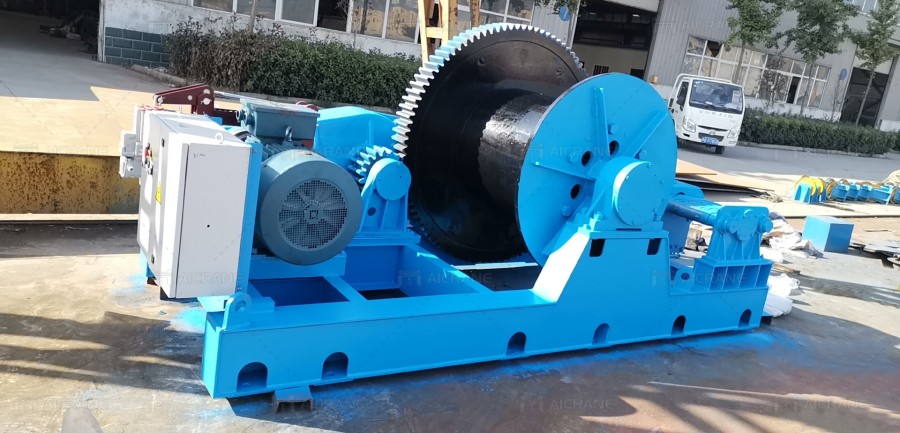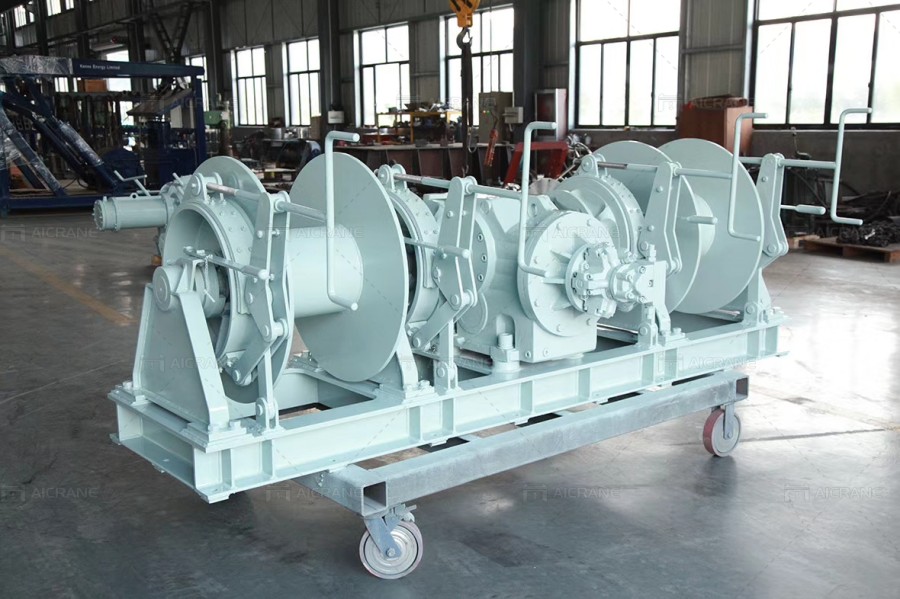There are several types of winches available for various applications in Nigeria. Some of the most common winch types and their applications include:
Winch Types
Electric Winches: These are powered by electricity and can be used in a variety of applications, including construction, marine, and automotive industries. The electric winch products are commonly used for lifting heavy objects and are ideal for jobs that require a high level of precision.

Hydraulic Winches: These are powered by hydraulic fluid and are commonly used in heavy-duty applications, such as construction and mining. The hydraulic winch machines are ideal for lifting and pulling heavy loads and can be used in both indoor and outdoor environments.
Pneumatic Winches: These are powered by compressed air and are commonly used in environments where electricity is not available. They are ideal for lifting and pulling heavy loads in hazardous environments, such as oil rigs and chemical plants.

Hand Winches: These are manually operated winches that are commonly used for light-duty applications, such as pulling a small boat out of the water or hoisting a flag.
Drum Winches: These winches use a drum to store the cable or rope and are commonly used in applications where a long length of cable or rope is required, such as for towing boats or lifting heavy objects.
The choice of winch type will depend on the specific application and the load capacity required. It is important to consider the weight and size of the load, as well as the environment in which the winch will be used, when selecting the appropriate winch for Nigeria for the job.
Safe Operation of Winches
Operating a winch can be dangerous if not done properly. Here are some tips for operating a winch safely:
Read the User Manual: Before operating a winch, it is important to read the user manual carefully to understand how the winch works and how to operate it safely.
Check the Winch: Before using the winch, inspect it carefully to ensure that all components are in good working condition. Check the cable or rope for any damage, and ensure that the winch is properly anchored to a stable object.
Wear Proper Personal Protective Equipment (PPE): Always wear appropriate PPE, such as gloves and eye protection, when operating a winch.
Use the Correct Cable or Rope: Make sure that the cable or rope being used with the winch is appropriate for the weight of the load being lifted or pulled.
Position Yourself Correctly: Position yourself so that you are clear of the load and the winch cable or rope. Stand to the side of the winch drum and never stand in the direct line of the cable or rope.
Use a Remote Control: Use a remote control to operate the winch from a safe distance, rather than standing close to the winch drum.
Avoid Overloading the Winch: Never exceed the weight capacity of the winch. Overloading the winch can cause it to fail and potentially cause injury or damage.
Use Slow and Steady Speeds: When operating the winch, use slow and steady speeds to avoid sudden jerks or movements that could cause the load to shift or fall.
Communicate Clearly: Use clear and concise hand signals or communication methods to ensure that everyone involved in the operation understands what is happening and what is expected.
Shut Down the Winch Safely: When the winching operation is complete, shut down the winch safely and carefully. Follow the manufacturer’s instructions for shutting down the winch properly.
By following these tips and using common sense, you can operate a winch safely and avoid injury or damage. For more details of winch equipment, you can check this website: https://www.ellsencranes.com/.